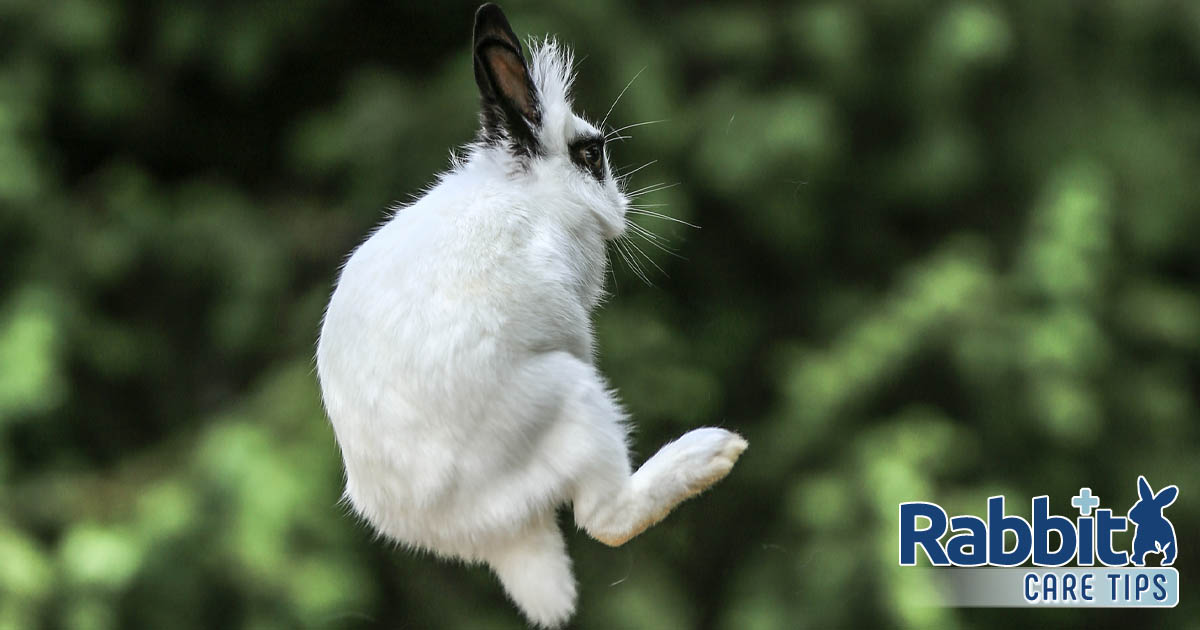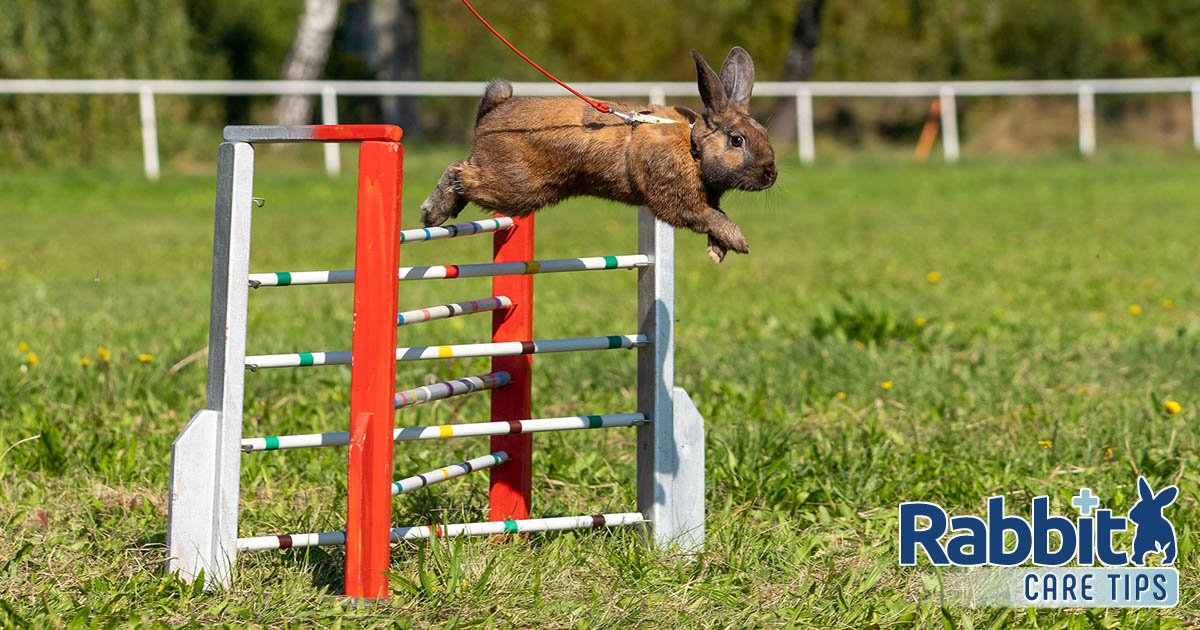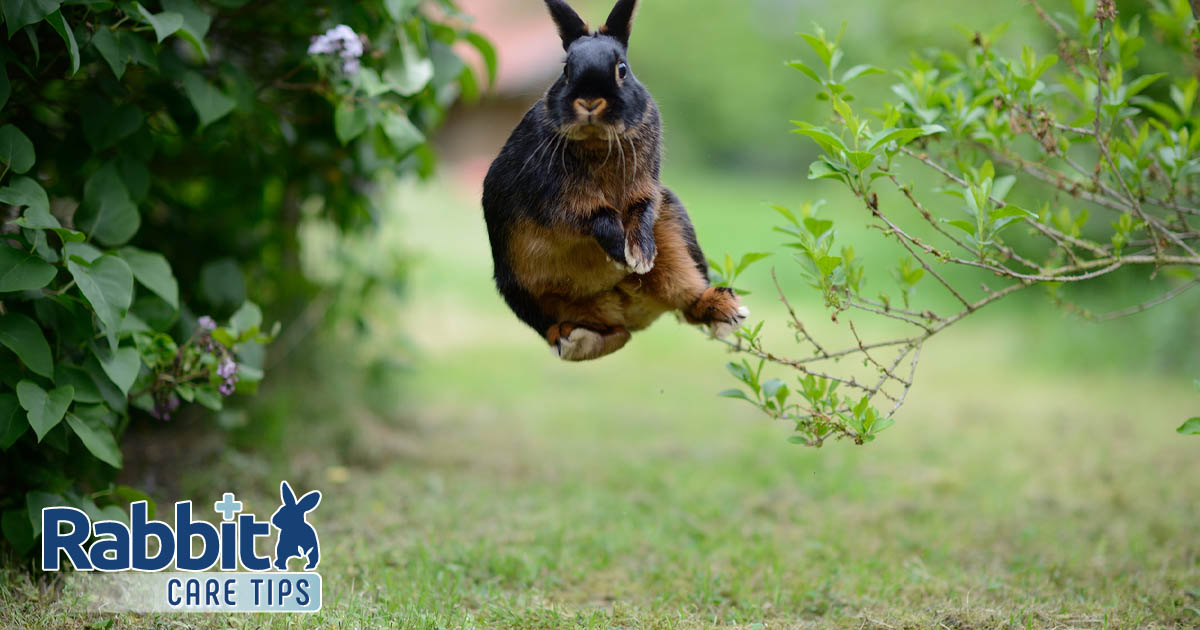Rabbits are notoriously known for their agility. From hurdling up around the house to leaping long distances in the wild, these cute furballs have never failed to amaze us.
Their robust biological anatomy and muscular hind legs give them the energy to thrust and leap forwards. This is primarily an evolutionary trait developed to help rabbits run away from predators while moving in a zig-zag manner to stall them.
If you have landed on this page, you either love to know more about bunnies, want to keep them off your garden, or simply want to ensure that your in-house perimeter is tall enough not to let your beloved pet escape.
In either case, this article will answer all your questions. Dive in to know more!
How High Can Rabbits Jump?
A fully matured adult rabbit can leap over 3 feet (one meter) vertically and 9 feet (2.5-3 meters) horizontally. Wild rabbits generally pull ahead compared to domestic rabbits, which can only jump up to two feet high.
Most bunnies avoid jumping fences taller than three feet, which is why Australia’s iconic rabbit-proof fence has a height of 3 feet.
Interestingly enough, the world record for both the highest and the longest jump is held by the same rabbit named “Dobby,” which is owned by Julia Samson from Sweden.

Domestic Vs. Wild Rabbits
Even though domestic and wild rabbits share the same recessive genes, they are very different in traits and physical capabilities. Wild rabbits, also known as ‘Jackrabbits,’ can jump as long as 20 feet, though official evidence on this is yet to be recorded.
In the case of domestic rabbits, all the biological developments have been carefully recorded. In fact, the only reason why rabbits have survived is domestication via generations of human beings.
Domestic rabbits come in a wide range of sizes and colors, whereas most wild rabbits look similar. The variation ranges from the 2-pound Netherlands Dwarf rabbit to the 14-pound French lop.
Outdoor rabbits also happen to be very skittish and cannot be caught easily unless you set a trap. On the contrary, domesticated rabbits often approach people and can be handled easily once tempted with a treat.
Indoor rabbits cannot withstand any life hazards outside like their wild counterparts. They are also not immune to infestation and can even die if left in the wild.
What Do the Owners Have to Say?
Most of the owners claim that 30 inches (76 centimeters) is the safe spot; their pet bunnies have never jumped higher than this point. Owners stated that the average pet bunny could clear 24 inches (61 centimeters).
That said, some owners do have rabbits that are slightly more gymnastic. Some reports even mention that certain rabbits jumped over 48 inches (122 centimeters), but the conclusive proof is yet to be found.
If you have a wall that is lower than 4 feet in your yard, then you may have to go searching for your bunnies when they jump over. Inside your house, you can stick a wooden piece or a mini door on the kitchen entrance to keep your rabbit from entering that area.
Which Breeds of Rabbits Jump the Highest?
An agile rabbit can even jump over objects which are designed for dog agility tests. A rabbit’s ability to hop and play around is totally dependent on the trainer and the kind of environment they are in.
Some of the best rabbit breeds in terms of agility are Standard Chinchilla, American Sable, Britannia Petite, Checkered Giant, Florida White, Mini Rex, Dwarf Hotot, English Spot, and Harlequin rabbit.
Among the 47 recognized breeds of rabbits, English lops come at the last position in agility. This is because of their long ears and backbones, which are prone to injury if they jump around.
Bigger breeds like Flemish Giant and the French Lop are also not ideal for hopping competitions. Moreover, their temperament is also quite lazy. Other breeds, like Himalayans and Belgian Hares, have long backbones and comparatively weaker front legs.
The breed of a rabbit is not a definite indication of its ability to jump high, though. It is totally up to your bunny to decide whether they like it or not.
Fun Fact: In the early 20th century, 24 rabbits were set free in the local suburbs of Australia. Soon, their population grew to a staggering 600 million! This caused heavy damage to crops. Thus, to combat this, Australians created the famous Rabbit-proof fence of Australia that still stands to this day.
How Can Rabbits Jump So High?
The foot of a rabbit is quite different from other herbivores. With a single push, they can leap great distances.
The presence of strong and robust muscles in the hind legs of bunnies is the reason why they are able to leap so high. If you compare the weight-to-power generated ratio of a rabbit to the fastest land mammal, the cheetah, you will find out that rabbits excel by over 29%!
Most rabbits can hop up to 40 inches (1 meter) from a standstill. Studies suggest that rabbits have such robust leg muscles that they can go up to 50 miles per hour in short bursts.
Since rabbits lie at the lower end of the food chain, they usually get eaten by carnivores. Their unique back legs facilitate the ability to quickly get away from predators. What’s more interesting is that rabbits can also use their legs as a self-defense weapon.
In the event that a predator threatens a rabbit, its legs are capable of delivering a painful kick as a warning. Wild rabbits can also be seen thumping their legs on the ground when hopping around, and this is a way to signal other bunnies in the area of danger nearby.
Once other rabbits hear this thump, they quickly head back to their hideouts in no time.
Ways to Prevent Any Problems Due to Their High Jumping Habit
The only way to counter the potential accidents that could hurt your rabbit is to set up a rabbit-proof fence. Here are some general points you should keep in mind:
- If you want to ward off these little devils from your garden, be sure to set up a fence that is at least 3 feet high. Also, make sure not to use any plies on the fence that could be used as staging posts.
- The type of wire that is recommended for fencing is a hexagonal twisted galvanized steel wire.
The Official World Record for Jumping

Rabbit jumping competitions originated in Sweden in the early 1970s. What started as a small rabbit club slowly grew across various countries, including Germany (2000), America (2001), Norway (2002), and Finland (2004).
The current record stands at 10 feet (301 cm) long and 3.5 feet (106 centimeters) high.
Fun Fact: Many times, rabbits suddenly leap mid-air and twist their bodies in a random motion. This movement is known as a binky. Rabbits do this when they feel safe and comfortable. It is a sign that your bunny is happy.
Training Your Rabbit to Jump Over Obstacles
The best way to teach your rabbit to jump over obstacles is first to teach them to follow a pointer. This allows them to get an idea of where you want them to go. Later on, you can replace the pointer with verbal commands.
To do this, you just need three pieces of equipment:
- A pointer, which is at least two feet long.
- A clicker, which is used to hint that your rabbit is doing great.
- Treat for those who like a tasty reward after a long training session!
First, rub some banana on the pointer and put it on either side of your rabbit’s face. Once your rabbit touches it with its nose, use the clicker and offer a treat right away.
Once your rabbit begins to follow the pointer, move the pointer at a slow pace over a short distance so that your rabbit gets habitual to following it.
After this, you can easily teach some basic maneuvers to your rabbit by placing objects in between the paths. You can also purchase a jump set for your rabbit and train it for low and high jumps over time.
At last, you can add a voice command to eliminate the need for a pointer as your rabbit gets better. Training your rabbit will not only strengthen your bond with your bunny, but it will also help them socialize and interact with other human beings.
How Far Can a Bunny Safely Jump Down?
4 to 5 feet is the maximum safe height that a rabbit can jump down from. Healthy medium rabbits can jump down up to 5.5 meters, but anything beyond that can lead to an injury.
The answer to this question is dependent on three things: health, personality, and size of the rabbit. Rabbits can jump down from higher heights than they can jump up to.
If you have a rabbit in your house, it will most likely not get hurt unless it jumps from a double bunker bed. Rabbits are pretty smart, though, and will not jump from heights by themselves unless spooked out.

